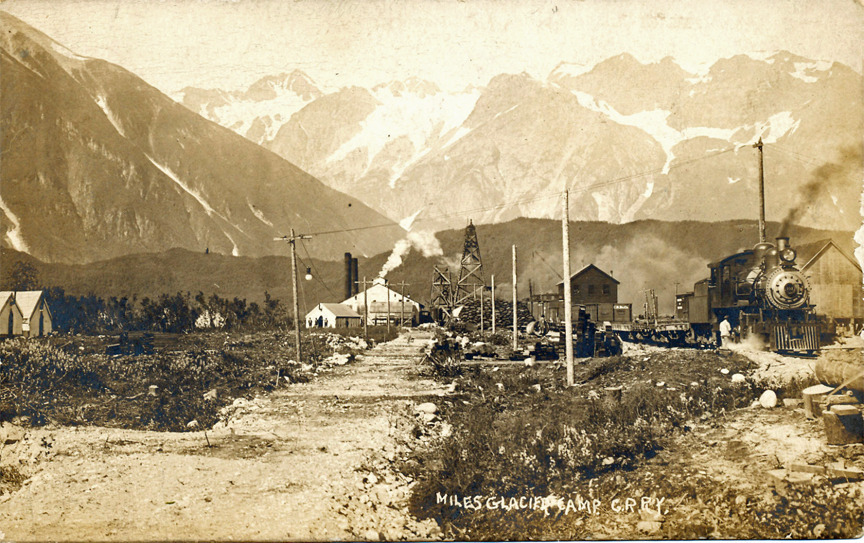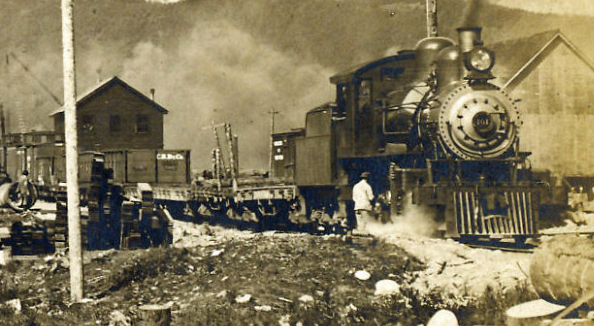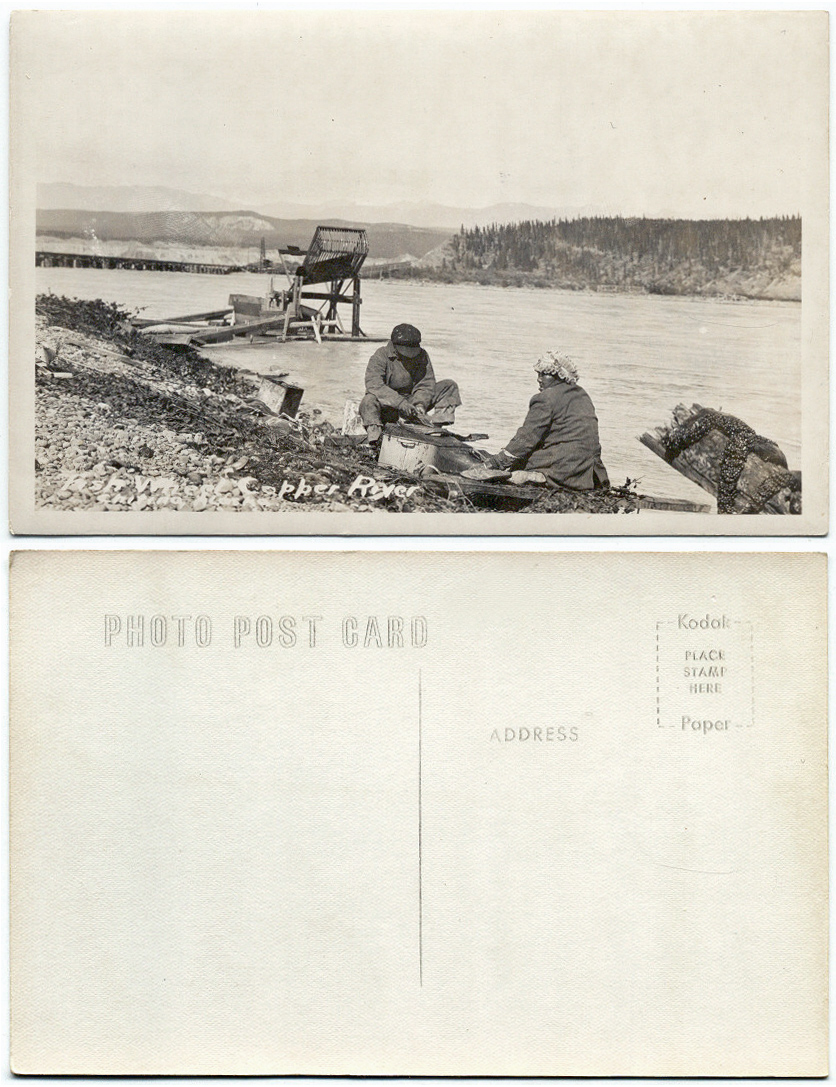Copper River & Northwestern Railway
Original Real Photo Postcard. Miles Glacier Camp showing Engine 101.
One of the best CR&NWR postcards to be found.
Cyko stamp box, divided back, circa 1907-1920's.
[shelf locator: Ephemera Notebook: CR&NWR]
Very good. No writing on back.
$250 plus $5.00 postage & packing & insurance (international orders extra) for this postcard.
To order this item email dick@AlaskaWanted.




From Wikipedia, the free encyclopedia: The Copper River and Northwestern Railway was a railroad, now defunct, built by the Kennecott Corporation between 1907 and 1911 to take copper ore from Kennicott, Alaska to Cordova, Alaska, a distance of 315 km (196 mi). The railroad was built by thousands of workers, who laid tracks around glaciers, across canyons and through deep snow and avalanche areas. Michael James Heney started building the railway from Cordova, Alaska. Other businesses tried to build it first to gain access to the rich copper and coal mines. He got the farthest and his idea of using Cordova as a natural shelter harbor worked; the other town's break water - from which his competitor's railways started - was destroyed. He could not pay for the rest of the road, so he sold it to his rival's failed railways. He then retired, but returned to work for the railway when it encountered difficulties. He was in a shipwreck a year later and died of consumption a few months later in 1910, a year before the railway was completed. 129 bridges were built for the railway at a cost of U.S $2.5 million. The most expensive bridge was the Million Dollar Bridge, which cost $1.4 million. The total cost of the railway was $20 million. Telephone lines were strung at the same time as the rail lines.
The last spike in the construction, a copper spike, was driven on Wednesday, March 29, 1911, by Chief Engineer E. C. Hawkins and Superintendent Samuel Murchison at Kennicott. The railway was completed in 1911 so that the company could obtain some of the land beside the railroad tracks. In order to obtain the land, the railway had to be completed within four years.
The cost of the railway was justified because the mines produced $200 million worth of copper ore during their operation.
